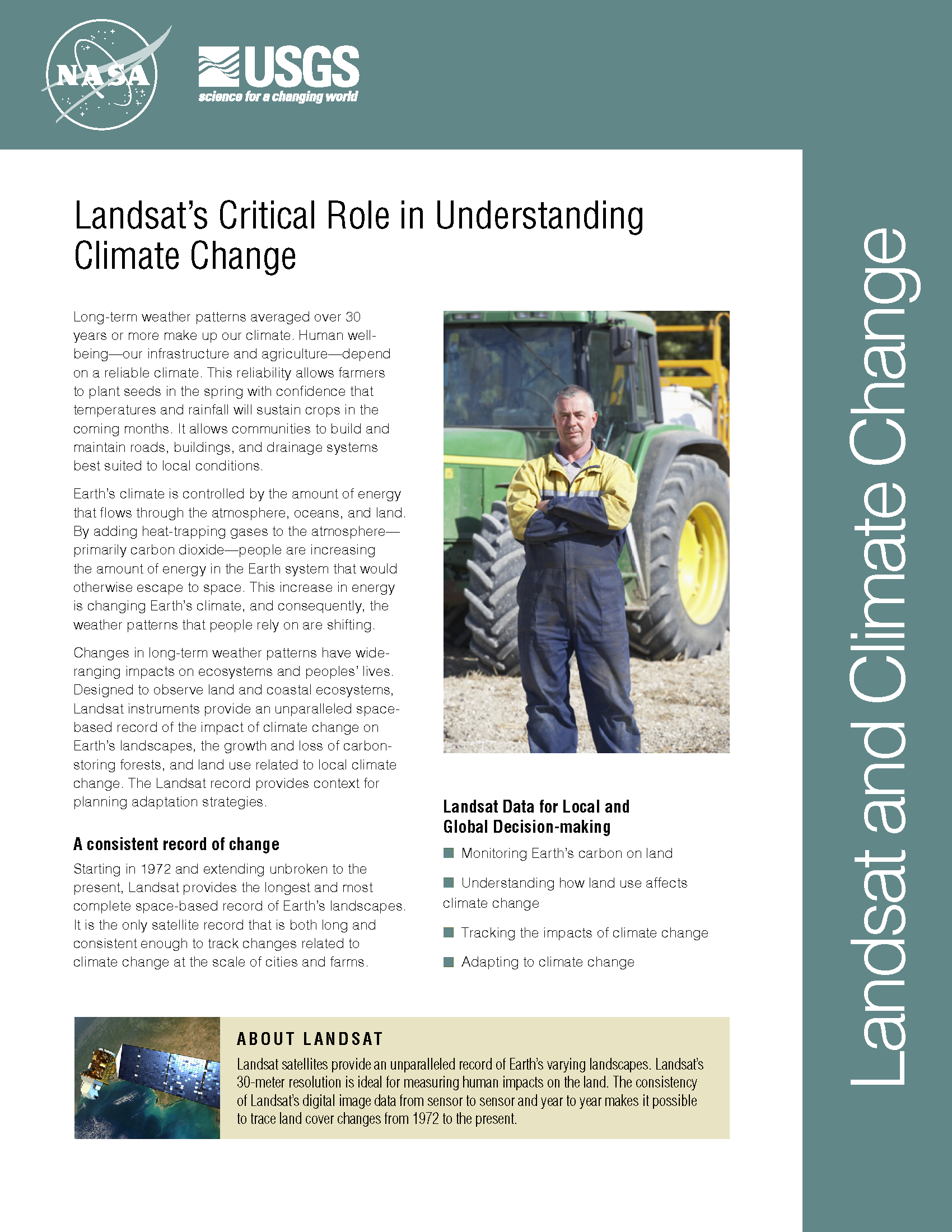Landsat's Role in Understanding Climate Change
Long-term weather patterns averaged over 30 years or more make up our climate. Human well-being—our infrastructure and agriculture—depend on a reliable climate. This reliability allows farmers to plant seeds in the spring with confidence that temperatures and rainfall will sustain crops in the coming months. It allows communities to build and maintain roads, buildings, and drainage systems best suited to local conditions. Earth’s climate is controlled by the amount of energy that flows through the atmosphere, oceans, and land. By adding heat-trapping gases to the atmosphere—primarily carbon dioxide—people are increasing the amount of energy in the Earth system that would otherwise escape to space. This increase in energy is changing Earth’s climate, and consequently, the weather patterns that people rely on are shifting. Changes in long-term weather patterns have wide-ranging impacts on ecosystems and peoples’ lives. Designed to observe land and coastal ecosystems, Landsat instruments provide an unparalleled space-based record of the impact of climate change on Earth’s landscapes, the growth and loss of carbon- storing.
Forest Monitoring: Bringing the Power to the People
Forest conservation is an issue of major concern to communities large and small around the globe. But gathering the monitoring data needed to make the right decisions has proven extremely prohibitive for individuals to entire governments.
When Trees Fall, Landsat Maps Them
The ravages of deforestation, wildfires, windstorms and insects on global forests during this century are revealed in unprecedented detail in a new study based on Landsat data.
NASA Brings Earth Science 'Big Data' to the Cloud with Amazon Web Services
NASA and Amazon Web Services Inc. (AWS) of Seattle, Wash., are making a large collection of NASA climate and Earth science satellite data available to research and educational users through the AWS cloud.
Studying Ice and Snow with Landsat 8
Allen Pope, a research assistant at the National Snow & Ice Data Center, recently created this video showing some of the ways Landsat 8 data are used to study the cryosphere.
Surveying Ice and Fire: The First Map of All of Iceland’s Glaciers and Subglacier Volcanic Calderas Released
For the first time, all of Iceland’s glaciers are shown on a single map, produced by the Icelandic Meteorological Office (IMO), in collaboration with the U. S. Geological Survey (USGS) and Iceland Geosurvey. The map is the first to incorporate historical data and coverage from aerial photographs and remote sensing satellites, such as Landsat and SPOT, to show the change in the areal extent of glaciers during the past century.
Mapping the World with Landsat
Speeding around the Earth at 16,800 mph (27,000 kph), two Landsat satellites are quietly, expertly watching and recording changes in Earth’s lands from space. They are gathering data for people to make maps–all kinds of wonderful maps–of our cities growing, rivers flooding, lava flowing from volcanic eruptions, forests expanding or shrinking, crops greening through the growing season, and even of evidence of pollution.


